Ask any researcher, and they’ll all say the same thing:
There aren’t enough hours in the day to analyze volumes of qualitative user data.
Until now.
AI promises to eradicate the drudgery of research work. Implementing AI into qualitative data analysis frees up a researcher’s time. So they can concentrate on extracting deeper insights that matter.
Most researchers have horror stories of manually coding their research. One 30-minute interview becomes five hours of extra work transcribing, labeling, rewatching, cross-referencing, and connecting the dots between calls.
Now multiply those five hours by the number of additional interviews you’re running.
The right qualitative data analysis tool (like HeyMarvin!) will literally change your work for the better. Hours become minutes.
Here’s our guide to Qualitative Data Analysis with AI.

What is Qualitative Data Analysis?
Qualitative data is rich, subjective, and unstructured. Researchers unearth deep user insights from open-ended questions.
Qualitative Data Analysis is the process of gathering, structuring, and interpreting non-numerical data. Researchers identify trends or patterns in contextual data from text, audio, and video. Their aim?
To answer the “why” behind user actions or decisions.
There are five methods of analyzing qualitative data:
- Content Analysis. Transforms verbal and behavioral data into quantitative output. Helps classify data to give reliable conclusions about users and their opinions.
- Thematic Analysis. Identifies, interprets, analyzes, and categorizes patterns in qualitative data.
- Narrative Analysis. Examines different user stories and reformulates them based on the context of each case – the revision of primary qualitative data by a researcher.
- Discourse Analysis. Studies relationships between information and the social context.
- Grounded theory Analysis. Formulates a theory from a single case. Further examination of real-world case studies is needed to see if they contribute.
Thematic analysis is a popular method in the research community. Let’s examine how to introduce AI into this type of qualitative data analysis.

Benefits of Using AI for Qualitative Data Analysis
Introducing AI into your qualitative research process used to be a luxury. Now, it’s a mandate.
Here are the numerous advantages you’ll see when you add AI Qualitative Data Analysis to your researcher’s toolkit:
- Efficiency. Go from raw data to insights faster. AI accelerates the data collection process, so there’s more time for analysis. Time saver.
- Scalability. AI has the capacity to process large swathes of data, far beyond what any human could. Glean more insights from various sources using AI for greater coverage.
- Exploration. Interrogate your data with AI. Use queries and prompts to explore and familiarize yourself with the data. Identify connections across files and projects.
- Iterate. Allow AI to take a first pass at coding your qualitative data. Foundational analysis is already carried out before you even lift a finger. AI allows you to quickly dive into deeper analysis.
- Creativity. AI is an eternal spring of inspiration. An endless idea generator – it may introduce different perspectives that you didn’t think of. Use it as a sounding board to refine your ideas.
- Summarize. Researchers can use AI to generate summaries of lengthy documents and transcripts. Kick the mundanity out of research work with this handy feature.
- Visualize. AI tools can assist with creating compelling data visualizations. This includes interactive dashboards, word clouds, and network diagrams. Capture your audience’s attention.
- Quality Control. AI can minimize researcher bias by identifying insights that humans might overlook. Using AI in data processing can improve accuracy as it eliminates human error. Incorporate AI into the report writing process to polish your writing.
Dive deeper into your qualitative research with AI. Data-driven, actionable insights = comprehensive results delivered faster.
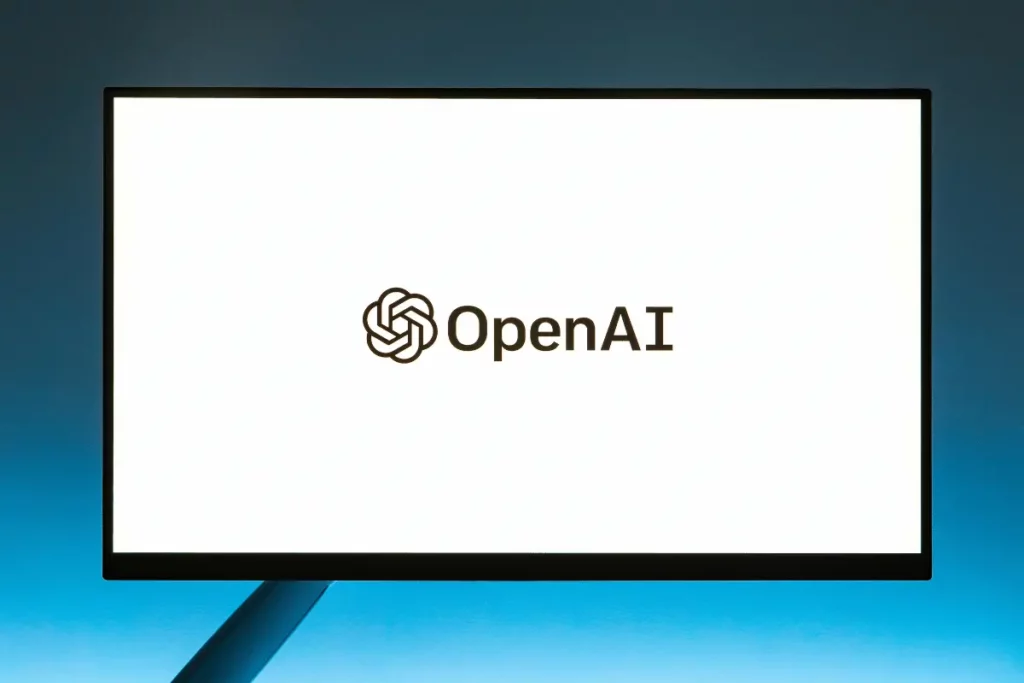
How to Use AI for Data Analysis
The output of qualitative research is largely text-based. Video and audio files are analyzed for expressions, emotions, and behavioral patterns.
Apart from that, everything boils down to dissecting what users say.
Since qualitative data is collected in words, not numbers, AI uses NLP to unearth trends and patterns in textual data.
Confused about the abbreviations? Head over to our glossary of AI in UX research terminology to get caught up.
It’s critical to identify the stages of qualitative research where you can implement AI.
Here are some suggestions:
- Transcription. Generate accurate verbatim transcripts in minutes.
- Note Taking. Use an AI Note Taker to synthesize critical points from interviews.
- Organize. Organize interview data by question. Categorize data by projects and
- Summaries. AI can summarize large bodies of text for quick review.
- Thematic Analysis. Create Labels or Automatic tags for thematic analysis.
- User Personas. Let AI assimilate user data to create well-defined user personas.
Learn more about every stage of the AI UX research process.
AI implementation frees up valuable time. Researchers can deeply explore their data to extract meaningful and actionable insights.
Best AI Qualitative Data Analysis Tools to Consider
Choosing an AI qualitative data analysis tool is no easy feat.
You need a powerful tool that dives into user data and extracts meaningful insights. Look no further — we present the best tools for qualitative data analysis with AI.
HeyMarvin
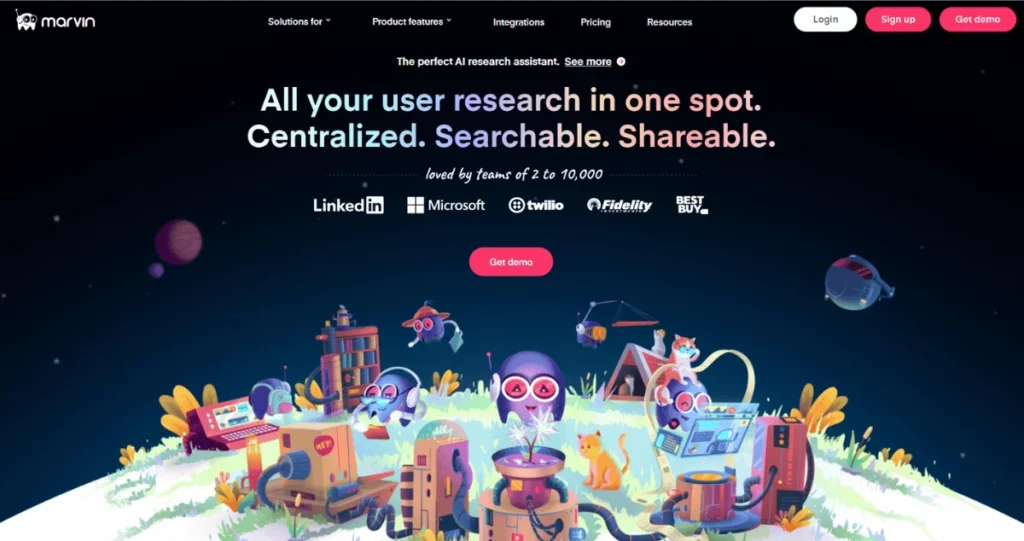
The perfect research assistant for your qualitative data.
Invite Marvin to your meetings or interviews for speedy summaries and accurate transcription in over 40 languages. But those are just the basics.
Marvin’s AI takes notes for you during an interview and finds patterns you might’ve missed. It automatically tags important labels for you to investigate later.
Use Ask AI, Marvin’s ChatGPT-esque search engine, to query your entire research repository. Stitch together insights across projects and share rich highlight reels with your stakeholders.
Marvin is the only research repository that analyzes both qualitative and quantitative data. You can now uncover massive amounts of complex data in minutes. Upload surveys into Marvin and watch it automatically surface key trends from the data.
HeyMarvin is a favorite tool among the research community. In less than a year, it became one of the leading user research platforms listed on G2.com, with many users sharing testimonials like this:
“There are so many things to love about Marvin compared to any other qualitative research tool out there right now.” — Hilary W., five-star review
ATLAS.ti
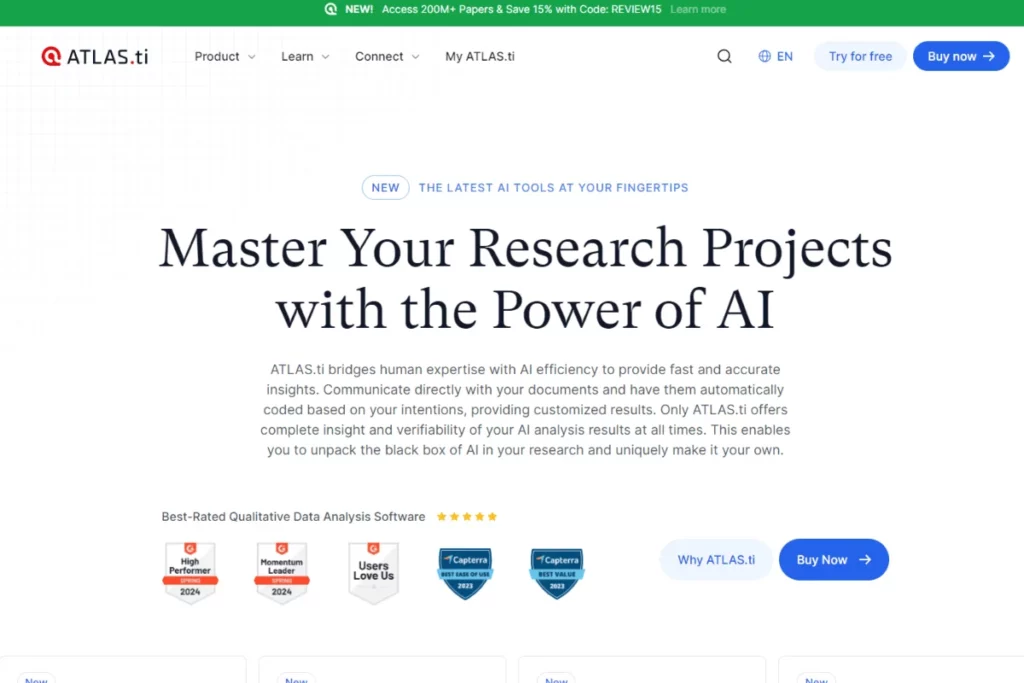
ATLAS.ti is a robust AI qualitative data analysis tool designed for academics. (Our CEO used to use AtlasTI when he was in grad school!)
That said, ATLAS.ti also offers customization options to UX professionals.
It carries out automated coding using AI based on guidelines set by the user. You can prototype testing within the application and visualize your results afterward. Export data into different software, so you can work within your preferred apps.
Delve
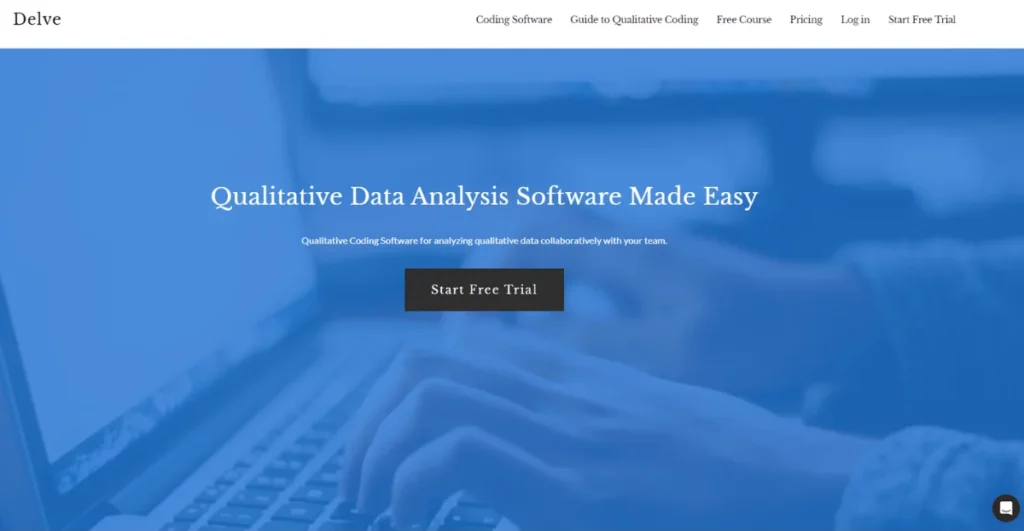
Delve helps unearth core themes from long-form customer interactions (sales calls and interviews). It is a cloud-based platform that helps researchers code large volumes of text data.
The application’s AI Assistant can help verify your codes. The Assistant finds and refines themes based on a user’s custom outlines. It organizes data snippets based on a user-defined codebook.
When conducting analysis, the Assistant suggests new subcodes from your data. It’ll also tell you when your data is representative or biased.
NVivo
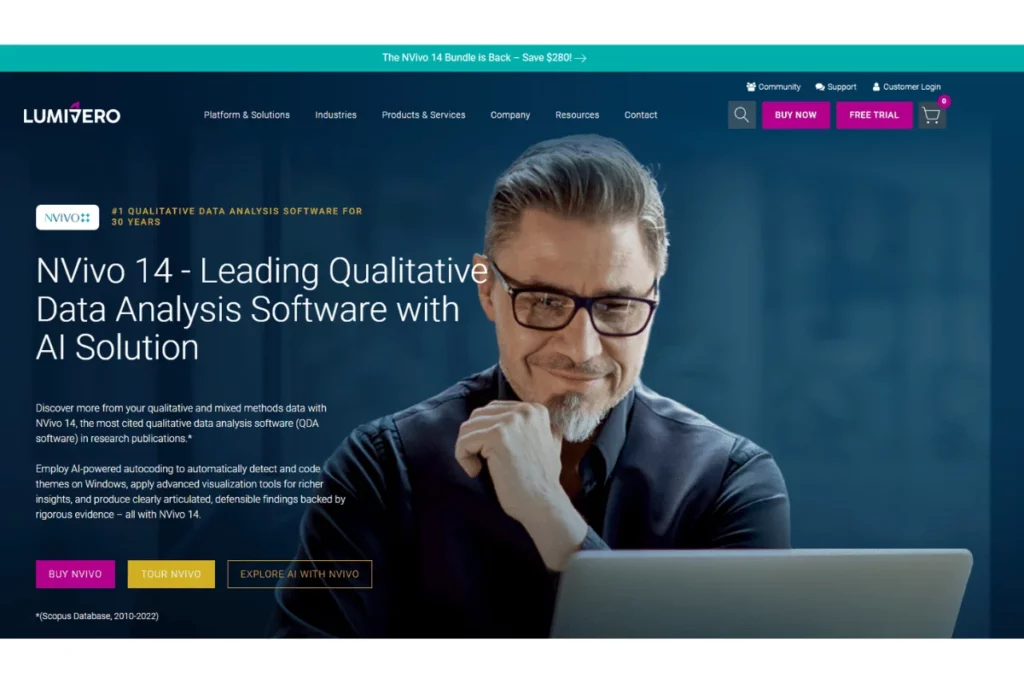
NVivo is best suited for mid-sized companies and large enterprises. Capable of handling almost any data type you throw at it. However, NVivo’s UI can be a tad complex for beginners.
Transcribe sales calls, product demos, and interviews. Import transcripts into the app for further data exploration.
A robust coding system enables you to categorize and organize your data effectively. Find themes in user feedback and visualize your results in the app itself.
NVivo allows qualitative inquiry beyond coding, sorting, and data retrieval. Query your data with complex questions to conduct a more intricate analysis.
Best Practices for Using AI in Qualitative Data Analysis
Integrating AI into qualitative data analysis requires a strategic and thoughtful approach.
Run through these key steps to ensure a successful implementation of AI into the process:
- Define Use Cases. Where does AI fit in with overall organizational goals? What qualitative data analysis stages could use AI’s assistance?
- Audit Tools. Take advantage of free trials and see what works best for your team. Evaluate the user experience and user-friendliness of a tool before making your choice.
- Data Quality. Ensuring high quality of input data. Sanitize and clean datasets before use. What you put into AI is what you get out of it.
- Instructions. Be precise and clear with your instructions and prompts. Since AI doesn’t have context, make sure to be as descriptive as possible. Iterate continuously until you get the output you desire.
- Soft Launch. Begin with a pilot project on a smaller scale. Evaluate how it panned out. Use this as a lesson that informs future projects.
- Change Management. No one likes change. Ensure that implementation takes place in a phased manner. Try to get colleagues onside before any employee backlash.
- Train. Conduct training programs for colleagues to establish. Facilitate collaboration between teams that will use AI or benefit from its output.
- Learn. Keep abreast with the latest technological advancements in AI. Learn how to leverage it in the research process.
- Iterate. Continuously evaluate research processes. Garner feedback to improve processes that utilize AI in qualitative data analysis.

Challenges of Using AI for Data Analysis
AI is at a nascent stage of its development.
We’ve already seen plenty of examples of AI gone wrong from large firms like Google and OpenAI.
As developers iron out the kinks in the technology, researchers must be wary of the limitations of using AI. [Probably worth noting — some of these may never go away.]
- Bias. All AI is trained on biased datasets. Biased datasets can misrepresent demographics and further reinforce stereotypes. Be mindful of this bias when reviewing AI-generated insights or suggestions.
- Overcompensation. Due to skewed datasets, LLMs have limited knowledge of certain users or data. When asked about these, AI can hallucinate. It perceives patterns or objects that are non-existent and returns false information. AI presents this information as facts.
- Transparency. Or lack thereof. AI is constantly referred to as a ‘black box.’ Users have little insight into how algorithms work, what information they use, or how they make decisions.
- Complexity. AI struggles with complex qualitative methodologies. These methods rely on an intricate understanding of the data. They require human interpretation. Remember, AI can’t read between the lines of human interaction.
- Privacy & Security. Researchers continually collect user data, including sensitive information. It’s essential to scrub any Personal Identifiable Information (PII) from stored data. Make sure any data stored is encrypted, too. (Pssst… Marvin is GDPR, HIPAA, and SOC2 compliant, so your user data is always protected. )
With these challenges in mind, always fact-check AI’s output.

Frequently Asked Questions (FAQs)
Here are some of the most common questions about AI qualitative data analysis tools.
How Can AI Be Used to Interpret Complex Qualitative Data, Such as Interviews And Focus Groups?
Here are a few steps to use AI in interpreting complex and voluminous qualitative data:
- Let AI assimilate your qualitative data from various sources.
- Use it to transcribe your interviews and focus group discussions.
- Leverage AI’s ability to summarize long-form interviews.
- AI tools can organize and structure transcribed data for easy interpretation.
- Ask AI to generate notes based on various interviews and focus groups.
- Run a preliminary coding exercise. Either let AI generate codes or themes or define some major ones in your codebook and have AI assign snippets.
AI performs the heavy lifting before you even begin to get into the weeds of interview and focus group data. AI delivers a starting point for your own qualitative data analysis.
What Ethical Considerations Should Be Taken into Account When Using AI For Qualitative Data Analysis?
When using AI for qualitative data analysis, consider ethical concerns like inherent bias, data security, and user privacy. AI tools are often trained on biased datasets, so acknowledging and trying to mitigate this bias becomes necessary.
While doing so, you should also ensure data is encrypted and compliant with security norms such as GDPR, SOC2, and HIPAA. It is essential to protect participants’ personal information by scrubbing and anonymizing data to prevent possible tracebacks.
How Does AI Improve Coding and Theming in Qualitative Research?
Thematic analysis involves identifying underlying meanings and patterns from data. AI can help expedite this process.
Tools with AI-powered coding can extract simple patterns and key codes from data. AI conducts a first-phase classification — by assigning data to different codes, labels, or tags.
AI does a great job at surface-level analysis. We recommend using AI tools to conduct a preliminary analysis for coding and theming. A researcher’s oversight is required to improve codes and refine analysis.
It takes a trained (human) eye to review codes and construct themes before diving deeper into qualitative data analysis.
Can AI Replace Human Analysts in Qualitative Research?
Nope! Qualitative research will ALWAYS need humans to:
- Oversee. Humans must guide the direction of the project or study. AI lacks the bigger picture. It can’t interpret why research is being carried out.
- Bring Context. AI lacks this (big time). A researcher’s role is to provide that context wherever necessary. The ‘why’ behind the words.
- Think Critically. To deal with unpredictability. Humans use their own judgment to sort ambiguous text into themes.
- Have Empathy. Humans have emotional and social intelligence. They can detect the subtle undertones behind responses. Humans understand various nuances behind the data.
- Generate Themes. Human researchers draw insightful conclusions and themes from data. AI cannot generate new themes effectively or interpret the subtle meaning behind the data. Here’s an example of AI-powered thematic analysis gone awry.
- Be Creative. Humans use their imagination to develop workarounds for unpredictable tasks. They also provide actionable recommendations.
- Bring Curiosity. Humans bring an inquisitive mindset. They identify new areas and questions for future research.

Conclusion
Companies are beginning to recognize the value of unstructured data.
So what does the future hold?
AI will only further entrench itself in qualitative research. Expect more collaboration between human expertise and AI’s continuously increasing capabilities.
We like to think of AI as the perfect research sidekick—what Robin is to Batman. AI is capable of taking over manual and cumbersome tasks within the research process, allowing researchers to focus on deeper analysis.
If you’re ready to introduce AI into the mix, we’ve got the perfect sidekick for you.
“Holy sidekicks, Batman! It’s Marvin.”





